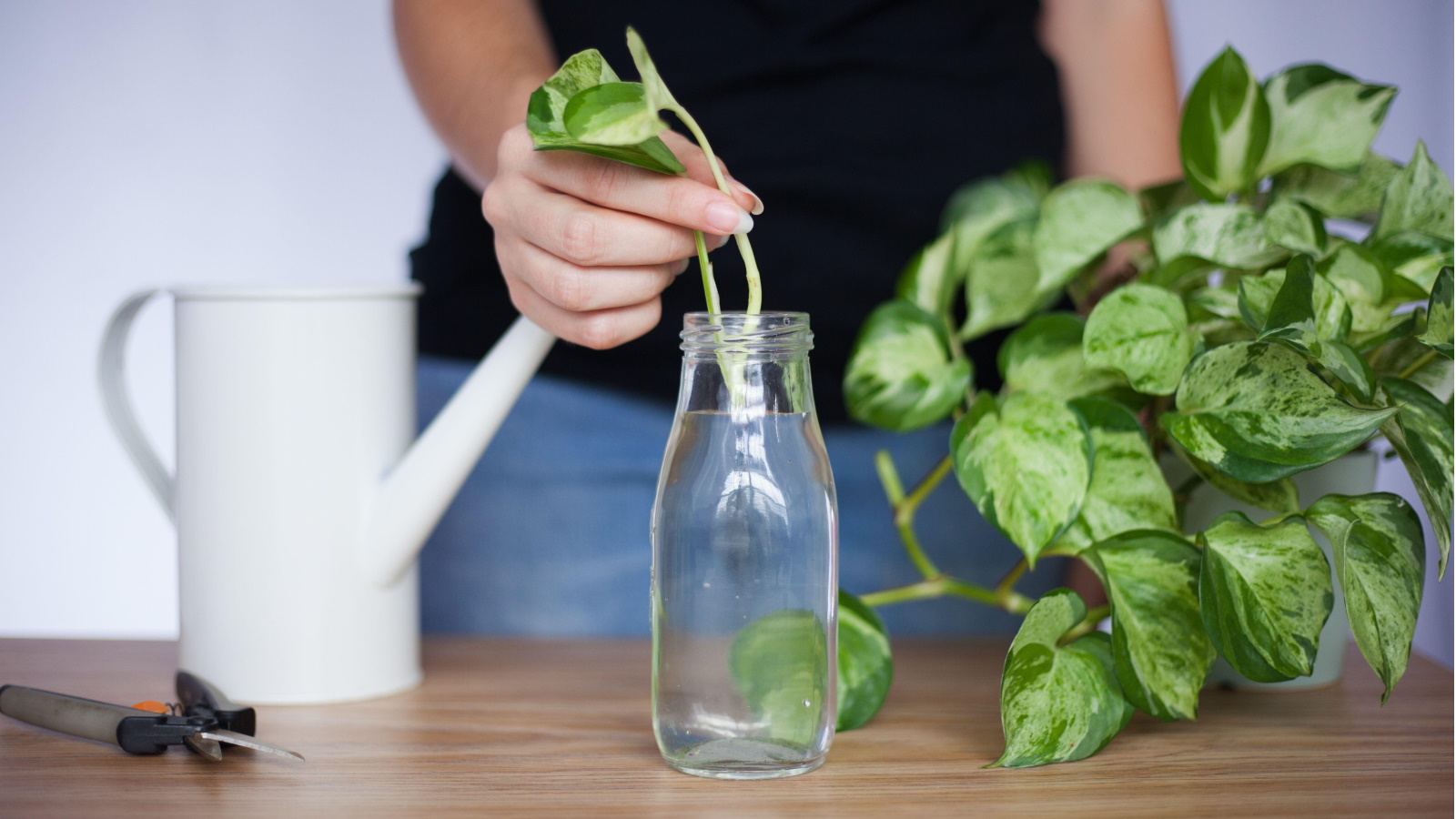
My home looks more and more like an indoor jungle as the weeks go on, and it's all thanks to propagation. I love being able to multiply my already-sizable houseplant collection and having gone through trial and error with houseplant propagation means I now grow new plants regularly.
If you're just starting to experiment with houseplant propagation, I recommend beginning with the easiest houseplants to grow from cuttings. There are, of course, other ways to propagate houseplants - such as through division - but taking cuttings tends to be a favored method because of how easy it can be. Having said that, it doesn't matter if you're growing cuttings in soil or water, there are some key houseplant propagation mistakes to avoid. Familiarizing myself with these mistakes has actually led me to discover how to make houseplant propagation more effective.
Each houseplant cutting will take a different amount of time to develop roots, but there are some general rules to follow to speed up the process. Whether you're attempting to propagate a succulent or an indoor tree, the tips below can help you speed up houseplant propagation.
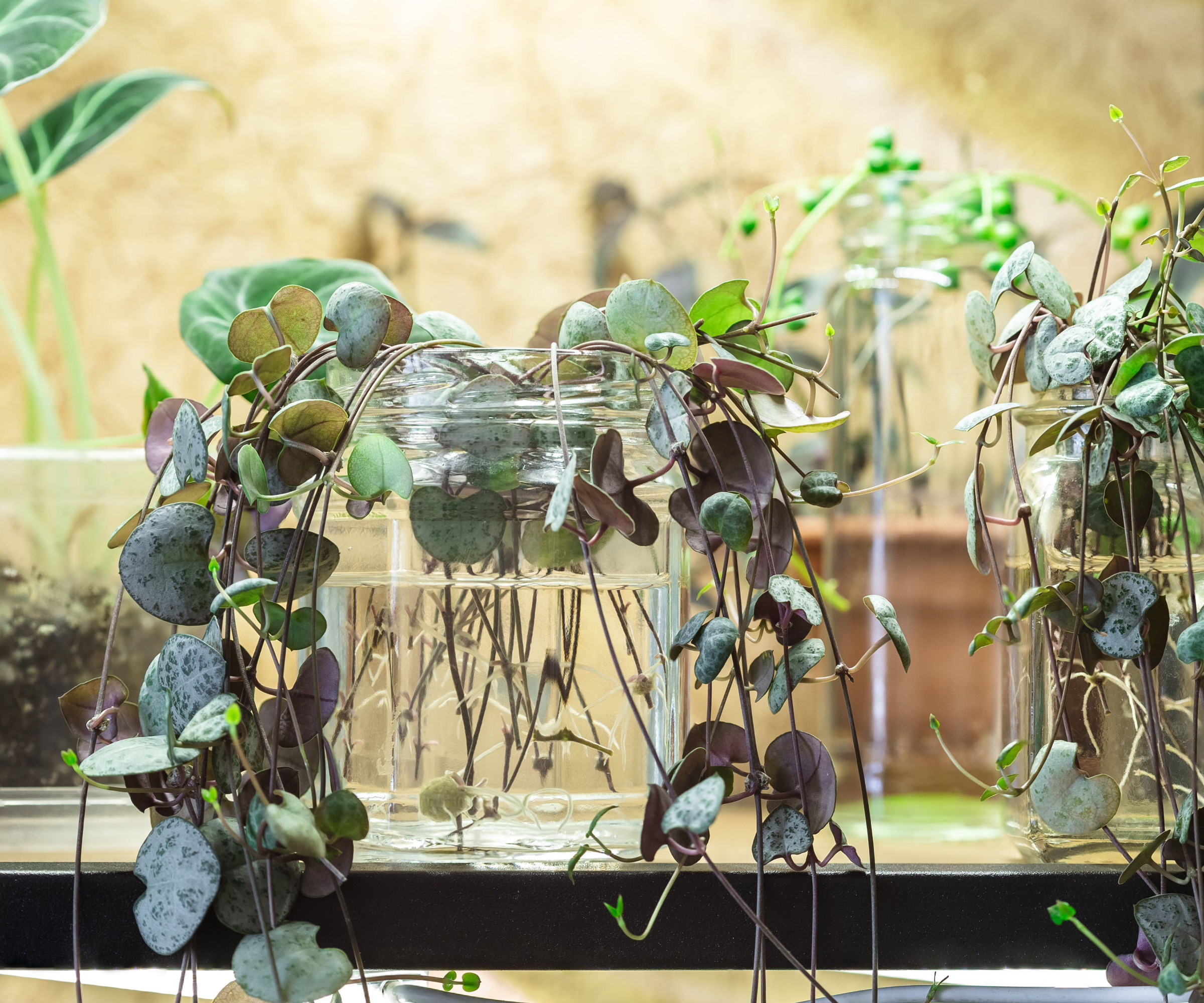
5 ways to speed up houseplant propagation
There are two ways to grow houseplants from cuttings: in water and in soil. While it's true specific plants will propagate better with one or the other, generally speaking both methods work well and require the same environment in order for roots to develop. Here are five ways you can speed up houseplant propagation, with expert tips.
1. Place your propagations in a greenhouse
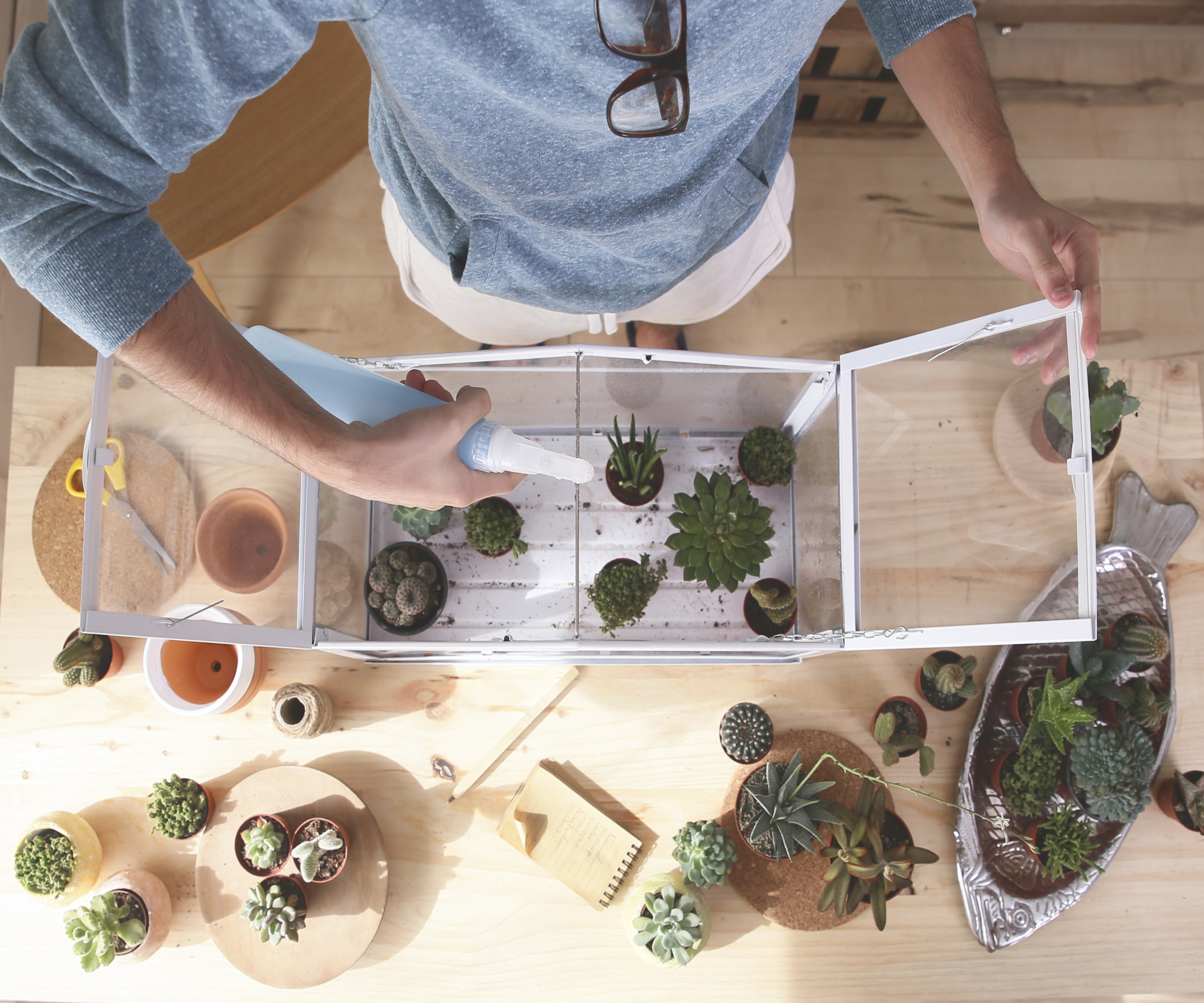
In order for houseplant cuttings to develop roots, they need plenty of warmth, moisture and light. Greenhouses provide the perfect environment for this, retaining humidity and letting lots of light in.
'Using a greenhouse or a humidity dome will speed up propagation because it will ensure the humidity remains high and the roots when they begin growing don’t dry out, as roots drying out will result in propagation failure,' says Julie Bawden-Davis, indoor plant expert at Healthy Houseplants.
If you don't have a greenhouse or simply want to keep your propagations inside, why not try making a DIY indoor greenhouse? Using jars and plastic containers can be an effective way to create a greenhouse-like environment.
Alternatively, you can use a range of indoor growing systems, like these cloche humidity domes from Amazon.
It's worth noting greenhouses work best for soil propagation because water may evaporate more quickly in this environment, resulting in you having to top up your water propagation more often.
2. Install a grow light
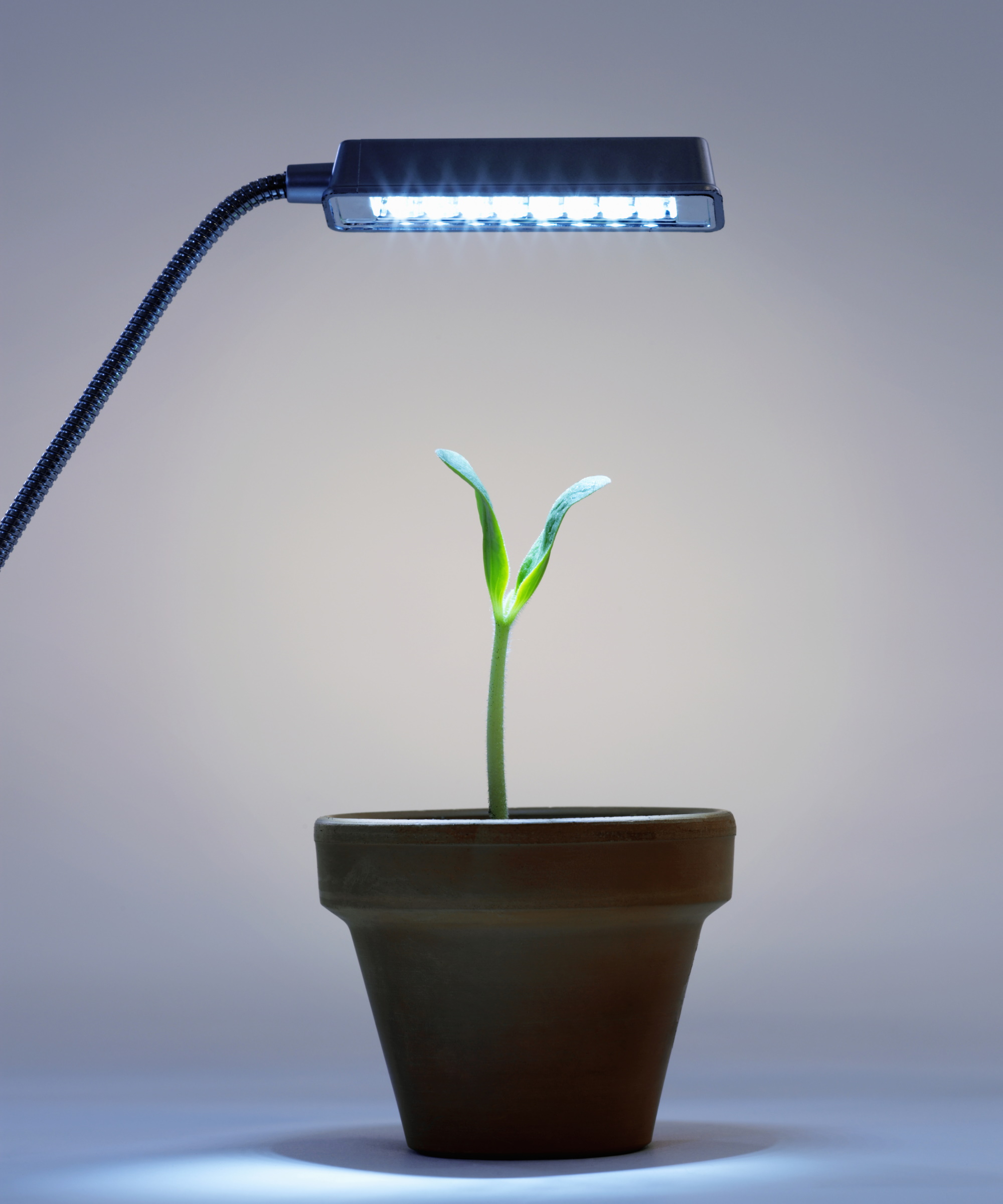
Something I've found works well for houseplant propagation is a grow light. This is especially useful when propagating houseplants during fall or winter, where the amount of natural light has been limited.
'Lighting can sometimes assist in propagation. It doesn’t necessarily help with root growth, but it will keep the mother plant healthy while roots form,' notes Julie.
Knowing when to use a grow light is important, as you don't want to waste electricity if the light isn't going to be effective. Use it to boost light levels for your cuttings, but also make sure to turn it off for an essential period of darkness that gives plants rest from photosynthesis.
There are so many different grow lights now on the market. I like to use a panel grow light, like this one from Amazon, to fit over multiple propagation cuttings. You can also invest in grow lights with red and blue light spectrums, like this at Amazon, to boost growth even further.
3. Choose a sunny windowsill
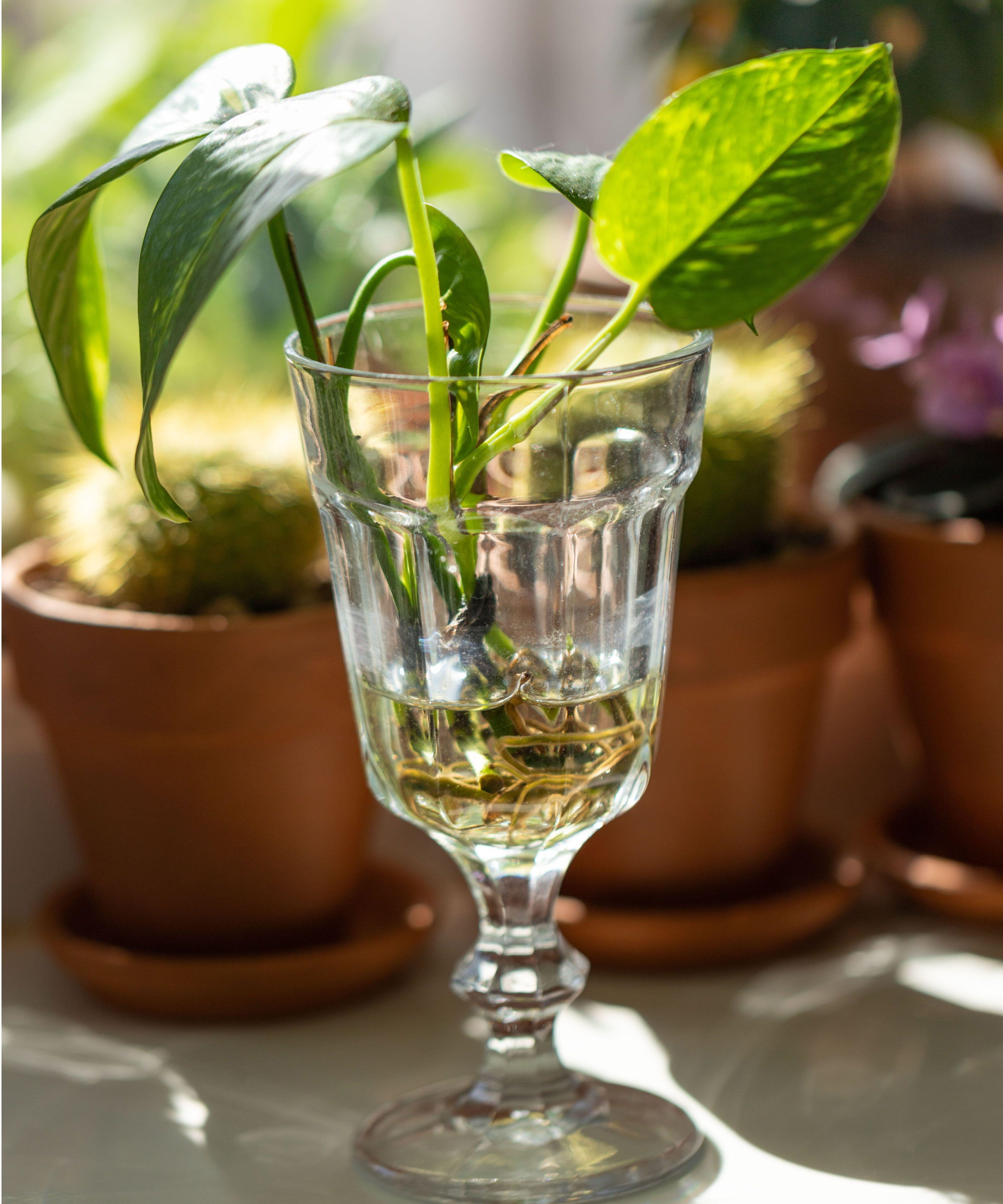
It's taken a bit of time to figure out the best place to propagate houseplants in my home, but, unsurprisingly, a sunny windowsill is the ideal spot. This provides cuttings with plenty of light and warmth to encourage root development.
A south-facing window will receive the most amount of light and warmth during the day, but be aware it could also cause leaf scorch. You might want to try using these sheer curtains from Wayfair to dapple the sunlight.
Nevertheless, if you don't have a particularly sunny windowsill in your home, using a grow light can help, as mentioned above.
4. Dip cuttings in a rooting hormone
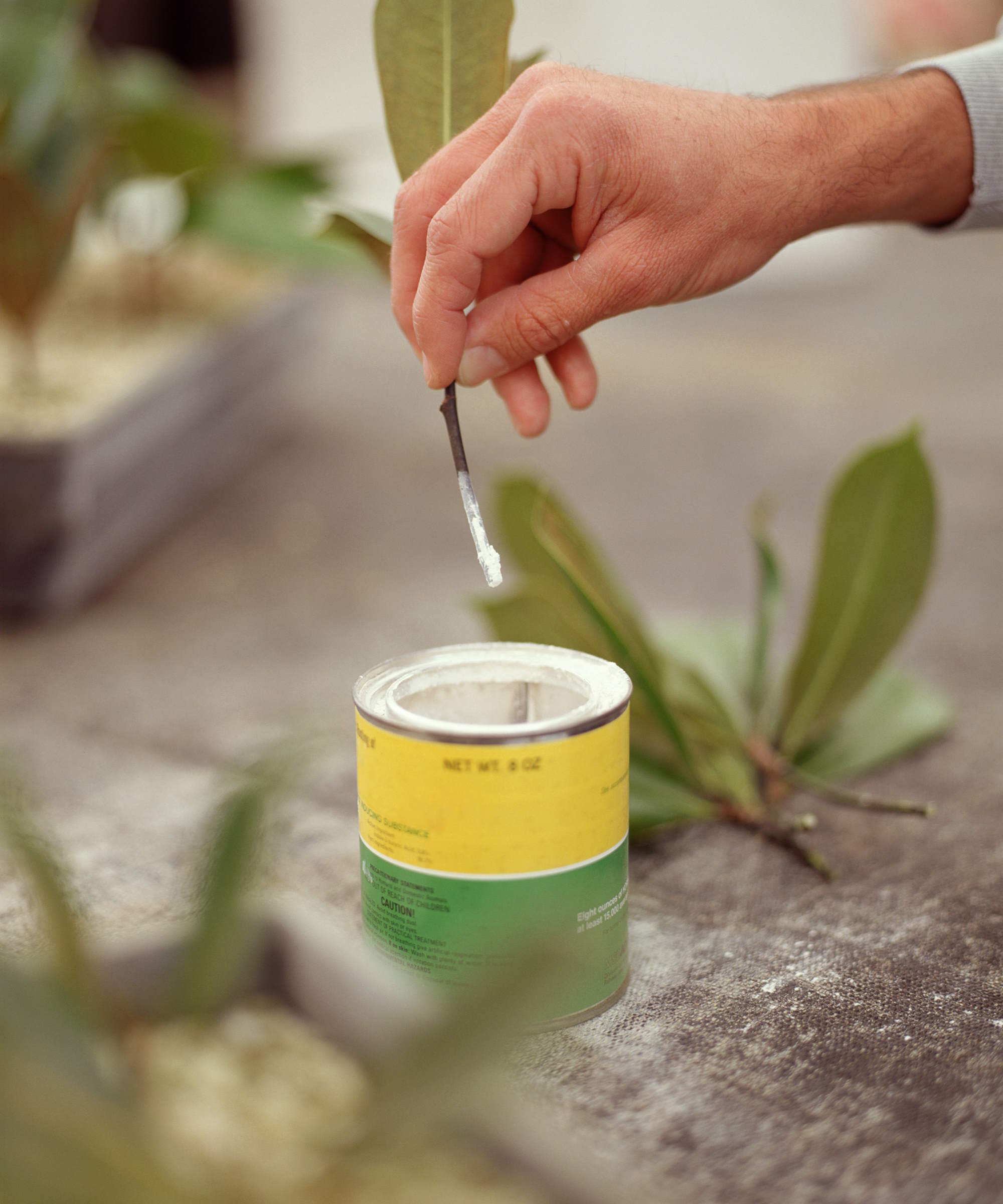
Another way to speed up houseplant propagation is by using a rooting hormone. This is a substance with chemicals and nutrients that replicate the root-growing hormones in the plant.
'Rooting hormone contains plant auxins, which are plant growth hormones that initiate and control plant growth,' explains Julie.
It's as simple as taking the end of your houseplant cutting and dipping it into the rooting hormone. Take care to ensure it has an even coating and covers the bottom leaf node before placing the cutting in soil.
Be aware using rooting hormone for a water propagation is unlikely to be effective. This is because the rooting hormone can be washed away in the water.
Rooting hormone comes in a number of different forms, like this rooting hormone powder from Amazon and this rooting hormone gel from Amazon.
5. Use pothos cuttings as a rooting hormone
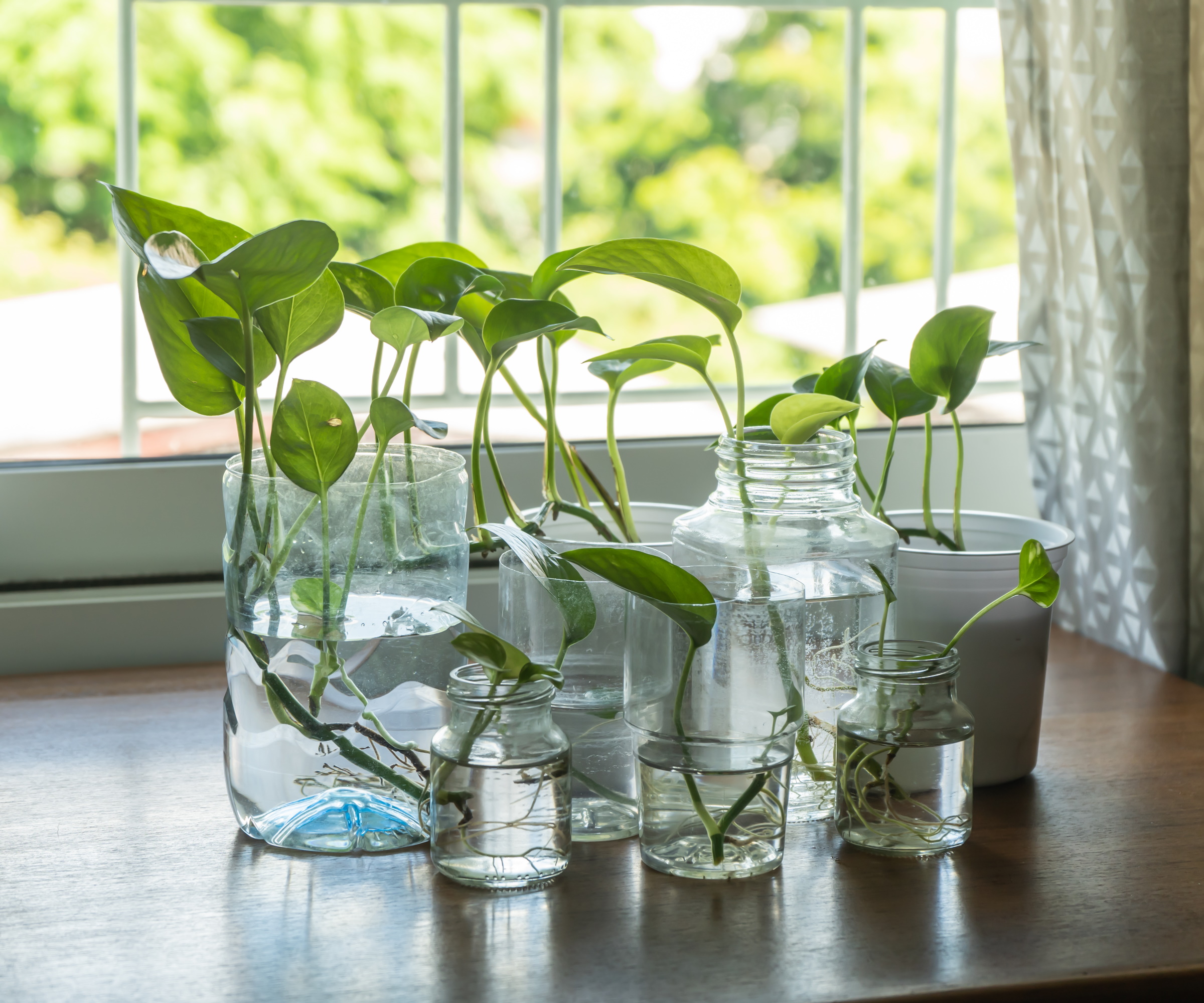
If you have opted for water propagation but are still keen to use something like a rooting hormone to speed up the process, try popping a pothos cutting in with your other cutting.
'Pothos can be used as a natural rooting hormone, as this plant species has a high amount of auxins and cytokinin,' explains Julie.
Not only will the photos cutting provide a natural rooting hormone, but you will also end up with a propagation of pothos to plant up.
It can be hard to juggle multiple cuttings at once, which is why using this propagation station from Amazon can help display your cuttings neatly and in a beautiful way.
FAQs
Can I fertilize houseplant cuttings?
It's no secret plant fertilizer helps plant growth and the different NPK plant fertilizer numbers indicate which nutrient plant food is high in. However, it's not wise to use plant fertilizer on houseplant cuttings that have not yet developed roots. This is because it can oversaturate the soil and cause the cutting to rot. Having said that, once the cutting has developed roots and shows signs of new growth, using fertilizer moderately can help boost nutrients and encourage more growth. Opt for a fertilizer with a higher phosphorus number for strong root development to help your young plant to establish well.
When propagating houseplant cuttings in water, regularly changing out the water can also keep propagation on track. Failing to do so is a classic water propagation mistake and results in a build-up of dirt and debris, which can attract pests and diseases. If you take care to change out the water and apply the above methods, you'll see your cuttings develop roots within weeks.







